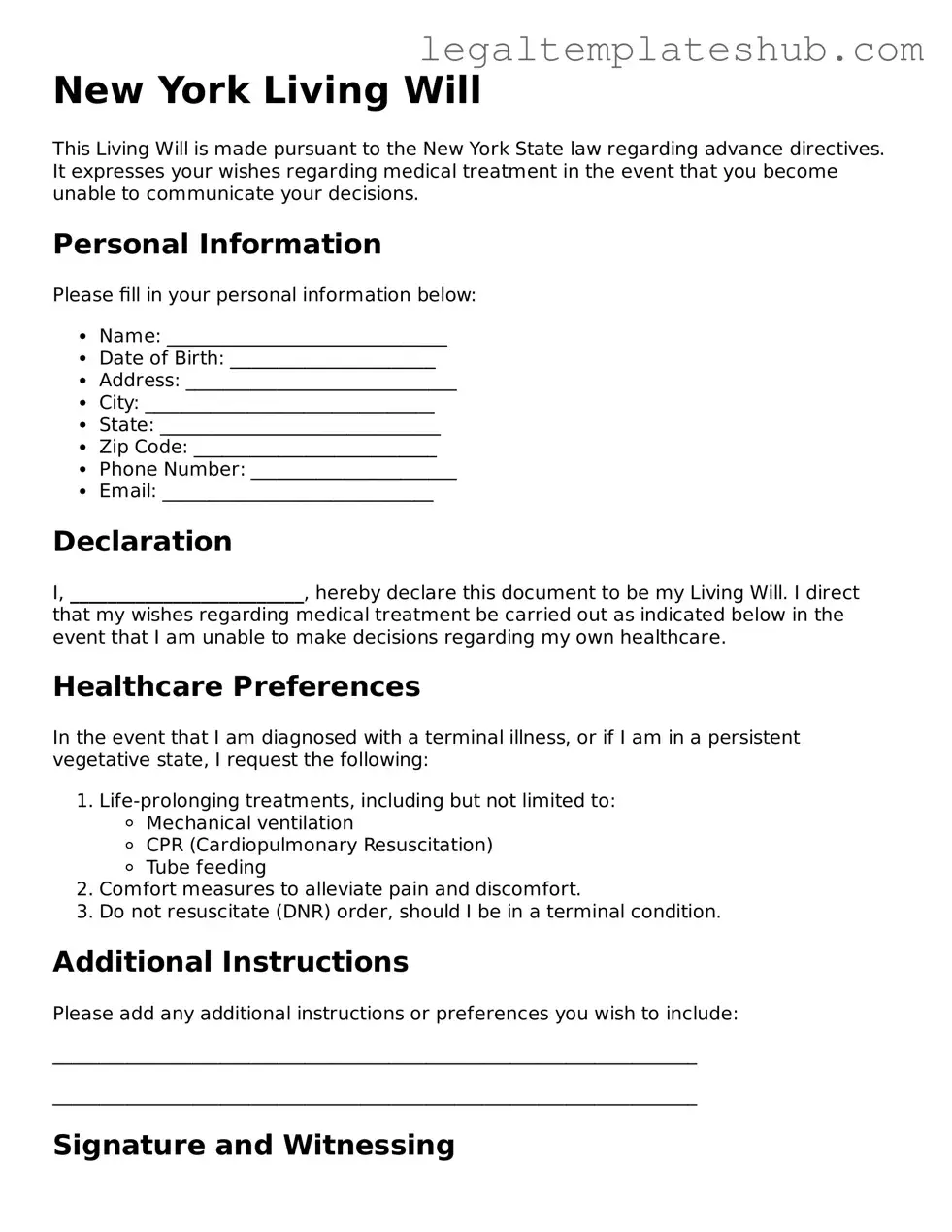Printable Living Will Document for New York
A New York Living Will is a legal document that outlines your preferences for medical treatment in case you become unable to communicate your wishes. This form ensures that your healthcare decisions are respected, providing peace of mind for you and your loved ones. To take control of your medical future, consider filling out the form by clicking the button below.
Access Editor
